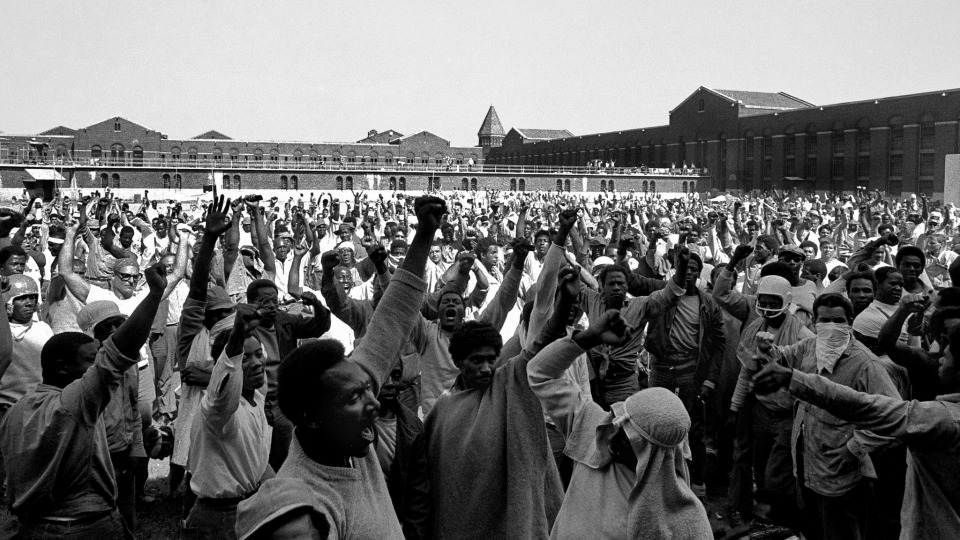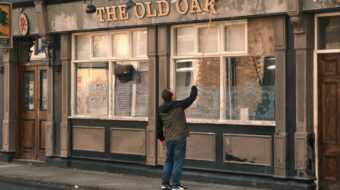
It was Vladimir Lenin at the start of the world’s first socialist revolution who made this impassioned and oft quoted statement “that of all the arts the most important for us is the cinema.” I’ve been inspired and motivated by these sentiments since I began writing film columns for this paper over 35 years ago, hoping to share the excitement about the power of cinema to change the world. And I’ve been attending the Festival of Festivals in Toronto since its inception 46 years ago. Changing its name to the Toronto International Film Festival (TIFF), it grew massively over the years until it was stopped last year by the pandemic, as were many major events around the world.
This year it began the recovery back to its rightful place as one of the most anticipated film events in the Western Hemisphere. It was never an awards festival but more a film lovers’ celebration, where the whole town comes out to honor the best in films, filmmakers, actors, and crew, and where film lovers standing in long lines are very familiar with the power of cinema to move people and change the world. Even though this year’s festival offered a trimmed-down version with only 200 films, there were still many titles worth writing home about.
This year was a festival of anniversaries. Twenty years ago, just hours before the planes hit the Twin Towers and the Pentagon, I was in a dark theater being “revolutionized” by Fidel, a moving documentary by Estela Bravo, still one of the most honest and poignant docs about the charismatic leader. It was the only film shown that morning before the shocking events took place and shut down the festival for the rest of the day. This year they recognized the 20th anniversary by showing Memory Box: Echoes of 9/11, a collection of witness accounts from back then matched by their interviews today. A very moving experience!
This year’s fest included live screenings along with virtual showings around the world. Many films debuted, celebrities attended, master filmmakers like Zhang Yimou, Nanni Moretti, and Barry Levinson were represented. Despite the slowdown in film releases during the pandemic, progressive struggles still continue around the world, and powerful, important films are still being made about them.
Back when Cindi Firestone’s 1974 doc Attica was released, it changed the world’s perception of prison life. It was an extraordinary documentary with a rare firsthand view of life inside a prison yard where a thousand inmates rebelled against prison conditions and took over New York’s Attica State Prison in 1971. Nestled in a small upstate village of mostly whites, the prison hired mostly locals to keep the roughly 70% people of color prison population in check. It was a time bomb waiting to explode.
TIFF kicked off this year with a remake of this American tragedy—50 years later! Famed documentarist Stanley Nelson (Miles Davis: Birth of the Cool, Black Panthers: Vanguard of the Revolution, Freedom Summer) revisited the tragedy in his deeply researched documentary with the same title, Attica. It’s an emotional journey to the past, with riveting footage and privileged interviews with those from all sides of the largest prison riot in U.S. history.
On Sept 9, 1971, a thousand prisoners took over the D Yard, in a heavily fortified prison 235 miles north of New York City. Even though in the beginning there was no specific leader, no order, and everyone was essentially on their own, all inmates, Black, white, and Puerto Rican, quickly began to work together, importantly, for the first time. Many had been in Vietnam and knew how to make tents for shelter, dig latrines to survive. They set up a medical service in the yard that was better than what they received as prisoners.
They were protesting cruel conditions in prison where white prisoners received special attention, where Black Muslims were denied religious rights. Many were affected by the recent untimely death of George Jackson in San Quentin prison. They started a protest by refusing meals, which startled the guards and showed them the prisoners looked organized.
Inmate LD Barkley, one of the victims, was an articulate outspoken leader-type who had only been sentenced to 90 days in Attica. He played a leading role and read out the demands that were collectively developed that included better prison conditions and religious freedom. A Jewish lawyer prisoner, Jerry Rosenberg, highly respected by most inmates, helped them through the legal process. He said that the injunction was not legal without a signature, and turned the team against the negotiations. Commissioner Oswald began as lead negotiator and eventually left, as Governor Nelson Rockefeller, in constant contact with President Nixon, made it clear there would be no acceptance of the prisoners’ demands. And Rockefeller refused to appear at Attica.
Certain public figures were asked by the inmates to come to Attica to help in negotiations. Black Panther Bobby Seale came for only three minutes and remained aloof, which disappointed the inmates. They invited Tom Wicker, a New York Times editor who wrote of his role in the very moving Pulitzer Prize-winning book, A Time to Die. William Kunstler became the main legal voice for the inmates. Claude Jones of the Amsterdam News was a negotiator and also gave an emotional interview in this newest film.
(I should warn “Spoiler” right now, but this is history, and most of you already know the outcome.)
When it was learned that one of the guards, who had been injured during the initial prisoner rush, died in the hospital, all reason went out the window, and negotiations became almost futile. Prisoners were forced to drop all demands except for amnesty.
During the long weekend of negotiations, tensions elevated outside the prison walls among the families of the white guards, while trigger-happy police and military couldn’t wait to go in and get the hated Black rioters.
The weekend tragedy came to a climax on Monday morning after an evening of incessant rain. Prisoners were forced to move out of the mud-soaked lot onto the concrete sidewalks outlining the grounds. It was dark gray and cold in the morning before the storm of violence began. Sensing impending doom, prisoners placed knives on the necks of the guard hostages trying to ward off a possible attack. A racial battle of revenge took place, ending with the uncontrolled torturing of survivors.
Although the hostages each had an inmate holding a knife to their neck, in the end, it was found that not one of them had their throats slit. The guards who died were killed by law enforcement’s barrage of bullets. It’s ironic to note it was the Black Muslim inmates who saved the lives of some of the guards throughout the ordeal because they believed in treating captives fairly.
In 2000, following a 25-year battle, former Attica prisoners received a $12 million settlement from the state. In 2005, the surviving hostages and families of the hostages killed also received a $12 million settlement from the state. This is a tense film, well edited, featuring great interviews with guards, witnesses, and surviving prisoners. Law and order vs anarchy was the perceived battle, but the evil of mass incarceration was exposed and prison reform was put on the agenda—and sadly remains there to this day.
The trailer can be viewed here.












Comments